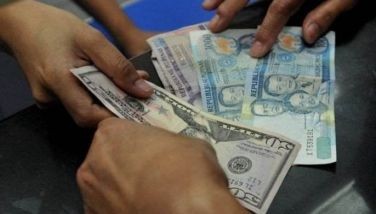Asia’s developing nations urged to address challenges to microfinance sector
MANILA, Philippines — Governments in Asia’s developing countries are being urged to expand the coverage of credit bureaus and implement financial literacy campaigns to help address challenges that may impact the growth of microfinance this year, according to the Asian Development Bank (ADB).
In its latest blog, the multilateral lender said the microfinance sector, which has rebounded last year following a sharp contraction during the pandemic, would need the right policies to be able to grow going forward.
“The right actions by microfinance institutions and governments can ensure a promising outlook for microfinance in Asia this year,” ADB said.
To help address issues faced by the microfinance sector, ADB said governments in Asia’s developing countries can strengthen and expand the coverage of credit bureaus, as well as launch national campaigns on financial literacy.
“Regulators will need to find the delicate balance between safeguarding the micro-borrowers from too much debt or high-interest rates and ensuring the long-term commercial viability of the sector,” ADB said.
In addition, it said the introduction of related services like micro-insurance and small savings products would help enhance long-term viability of the sector.
Among the factors that can affect the growth of microfinance activities in Asia this year are the uncertainties related to the Russian invasion of Ukraine.
“Increased energy and food prices have triggered record-high inflation, which impacts the income and the repayment ability of micro borrowers,” ADB said.
The move of central banks around the world to raise interest rates to fight high inflation is also expected to impact the sector’s growth this year as it will increase borrowing costs for microfinance institutions, and impact their profitability as most find it difficult to pass on the higher costs to their borrowers.
In the Philippines, headline inflation hit a 14-year high of 8.1 percent in December due to increases in food prices.
To tame inflation, the Bangko Sentral ng Pilipinas raised rates by a total of 350 basis points last year.
As the US dollar and other currencies have strengthened with the rising interest rates, ADB said microfinance institutions’ ability to seek overseas private investment, as well as borrowing options from overseas lenders would be limited.
“Rising prices, reduced spending and recessionary conditions in the US and Europe also hurt the ability of overseas migrants to remit their savings back to their families. This is essential cash inflow for low-income rural households, particularly in countries like Bangladesh, Indonesia, Nepal, and the Philippines,” ADB said.
Another factor that would affect the sector’s growth this year is the pace of micro-lending, as the need for micro loans by the more vulnerable rural households is likely to increase given rising food and energy expenses.
“While microfinance institutions can respond aggressively to this opportunity, caution is expected to be exercised. Given the recent concerns over excessive borrowings among micro borrowers, there will likely be closer oversight by regulators, with microfinance institutions expected to reduce lending rates and fees by the former,” ADB said noting such may lead to lower profitability.
In order to grow, ADB said microfinance institutions and their investors may have to rely more on adding new borrowers instead of increasing loan sizes.
As it may take a long time to get new capital for smaller microfinance institutions, ADB recommends exploring other business models such as serving as an agent for other larger commercial banks or institutions to sustain operations.
- Latest
- Trending






























